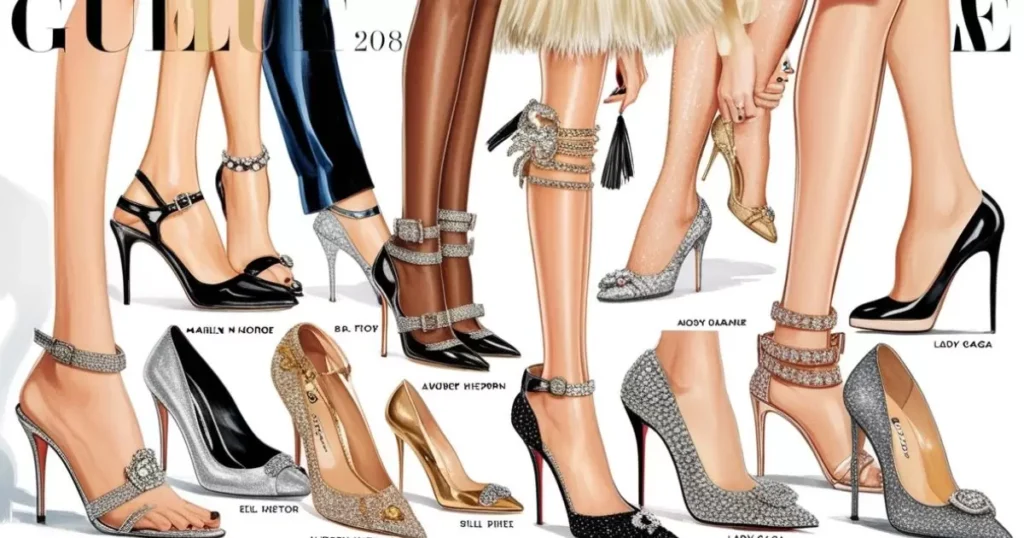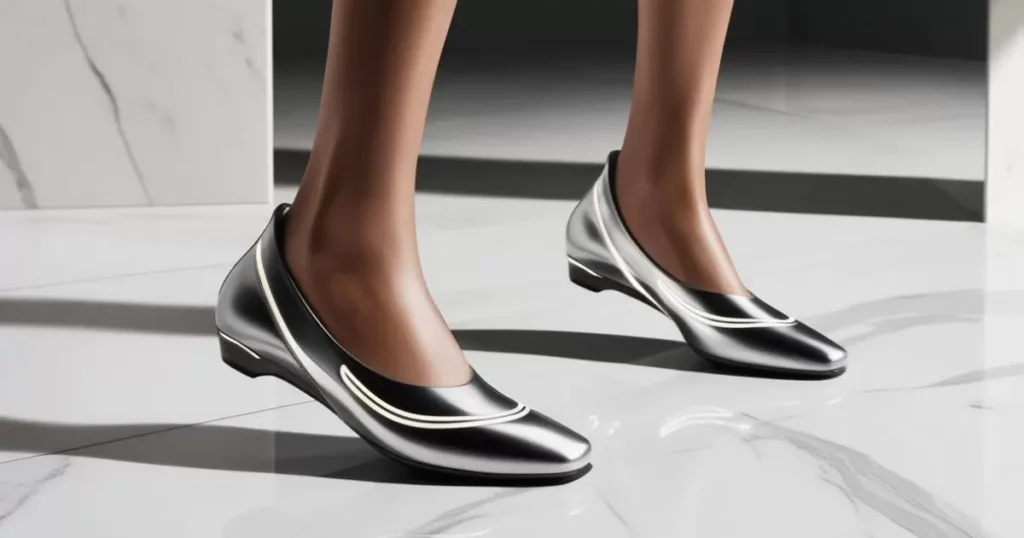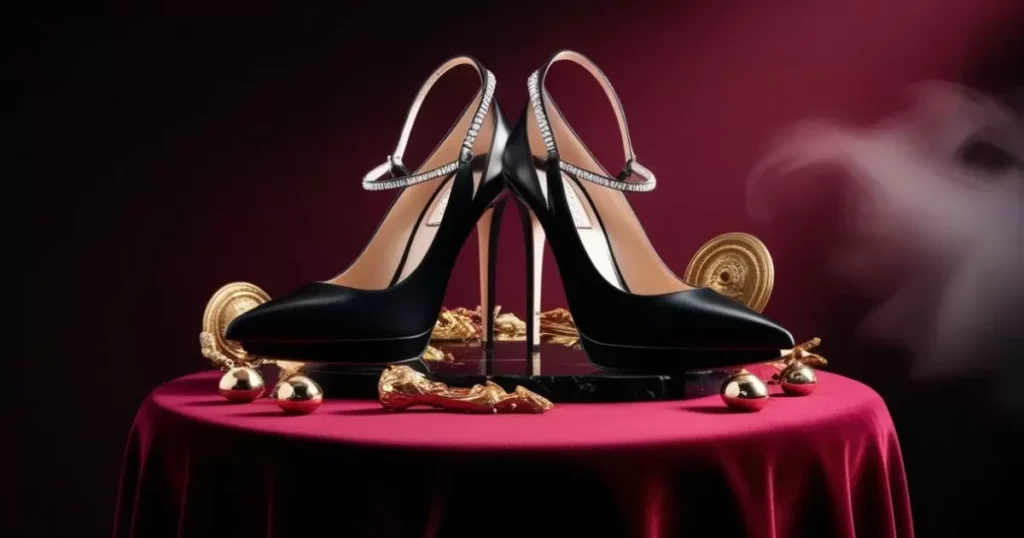High heels have long been more than just footwear. They’re a cultural icon, a symbol of power, and a topic of heated debate. From ancient civilizations to modern runways, these elevated shoes have shaped our perception of status, gender, and style. Let’s dive into the fascinating world of high heels and uncover what they truly symbolize in our society.
The Towering Legacy: High Heels Through Time
Ancient beginnings: From Persian cavalry to European nobility
High heels didn’t start as a fashion statement. In ancient Persia, they served a practical purpose. Cavalry soldiers wore heeled boots to keep their feet secure in stirrups while riding. This gave them a significant advantage in warfare, allowing for more stability and control when shooting arrows on horseback.
As trade routes expanded, this Persian innovation made its way to Europe. By the 16th century, European aristocrats had adopted heels as a sign of status. The added height literally elevated them above the common folk, creating a visual representation of their superior social standing.
The Renaissance revolution: Heels as a status symbol
During the Renaissance, high heels became synonymous with power and privilege. In 1533, Catherine de Medici, a petite Italian noblewoman, wore heels to appear taller at her wedding to the Duke of Orleans. This trend caught on quickly among the nobility, and soon, the height of one’s heels correlated directly with their social standing.
Fun fact: In 17th century France, King Louis XIV issued an edict that only nobility could wear red heels. Talk about exclusive footwear!
Gender-bending: When men wore the high heels
Contrary to modern associations, high heels were initially popular among men. King Louis XIV, standing at 5’4″, was particularly fond of them. He often wore heels adorned with miniature battle scenes, showcasing his military prowess. This male-centric trend continued until the Enlightenment era when practicality became more valued, and men’s fashion shifted towards more functional footwear.
Power on a Pedestal: Status and Social Dynamics
The aristocratic edge: Heels as a mark of privilege
Throughout history, the ability to wear impractical shoes has been a sign of wealth and status. High heels, being difficult to walk in and unsuitable for manual labor, clearly indicated that the wearer didn’t need to work with their hands (or feet).
Height hierarchy: Taller equals more influential?
Studies have shown a correlation between height and perceived authority. A 2016 study published in the Economic Journal found that taller individuals tend to earn higher wages and are more likely to be in leadership positions.
| Height Increase | Average Salary Increase |
| 1 inch | 1.4-2.9% |
| 4 inches | 5.6-11.6% |
High heels provide a temporary boost in height, potentially leading to increased perceived authority and confidence.
Modern power plays: CEOs and their sky-high soles
In the corporate world, high heels continue to play a role in power dynamics. Many female executives view them as part of their “power uniform.” Sheryl Sandberg, former COO of Facebook, once said, “I wear heels to work because they make me feel more confident and powerful.”
However, this association isn’t without controversy. In 2016, a receptionist in London was sent home for refusing to wear high heels, sparking a debate about workplace dress codes and gender discrimination.
Femininity Redefined: The Heel in Gender Expression
The shift from masculine to feminine
By the 18th century, high heels had become firmly associated with femininity. This shift coincided with the Enlightenment’s emphasis on gender differences and the rise of the “separate spheres” ideology.
Pin-ups and bombshells: Heels in mid-20th century pop culture
The 1950s saw high heels become a central element of the “bombshell” aesthetic. Icons like Marilyn Monroe and pin-up models popularized stilettos, cementing the association between high heels and female sexuality.
Quote: “Give a girl the right shoes, and she can conquer the world.” – Marilyn Monroe
Breaking the mold: Men reclaiming heels in the 21st century
In recent years, there’s been a resurgence of men wearing heels. Celebrities like Harry Styles and Billy Porter have been spotted in heeled boots and shoes on red carpets, challenging traditional gender norms in fashion.
The Art of Elevation: Fashion, Design, and Aesthetics
Architectural marvels: The engineering behind iconic heel designs
High heels are feats of engineering. Designers must balance aesthetics with structural integrity, ensuring the shoe can support the wearer’s weight while looking elegant.
Some iconic designs include:
- The Stiletto: Invented in the 1950s, it features a long, thin heel.
- The Platform: Popularized in the 1970s, it adds height to both heel and toe.
- The Wedge: Created by Salvatore Ferragamo in 1936, it provides more stability.
From stilettos to platforms: A style for every statement
Different heel styles convey different messages:
- Kitten Heels: Subtle and professional
- Block Heels: Stable and practical
- Stilettos: Sexy and bold
- Platforms: Dramatic and attention-grabbing
Famous feet: Celebrity heel moments that shaped trends

Celebrities have long influenced heel trends. Some notable moments include:
- Audrey Hepburn’s elegant kitten heels in “Breakfast at Tiffany’s”
- Lady Gaga’s extreme platform boots
- Carrie Bradshaw’s (Sarah Jessica Parker) designer shoe obsession in “Sex and the City”
Walking Tall: The Psychology of High Heels
The confidence factor: How heels affect self-perception
Many wearers report feeling more confident in heels. This could be due to the increased height, altered posture, or the cultural associations of heels with power and attractiveness.
Pain and gain: The psychological toll of discomfort
Despite the confidence boost, wearing high heels can be painful. This raises questions about the psychological impact of enduring discomfort for the sake of appearance.
A 2014 study in the Journal of Foot and Ankle Surgery found that 71% of women who wore high heels reported foot pain.
First impressions: How others perceive heel-wearers
Research has shown that people wearing high heels are often perceived as more attractive and higher status. A 2014 study in the journal Archives of Sexual Behavior found that men were more likely to help women wearing high heels than those in flat shoes.
Sensuality and Seduction: The Erotic Symbolism of Heels
The science of attraction: How heels alter body language
High heels change the wearer’s gait and posture, often in ways perceived as more attractive:
- Increased lumbar curvature
- Shorter strides
- More hip rotation
Fetishism and fantasy: High heels in erotic imagery
High heels have long been a staple in erotic imagery and fetish communities. This association dates back to the 19th century when the first erotic photographs featured women in heels.
Empowerment or objectification? The ongoing debate
The role of high heels in female empowerment is hotly debated. While some view them as tools of objectification, others see them as symbols of power and self-expression.
Stepping into Commerce: The High Heel Industry
Market giants: Who’s who in heel manufacturing
The global high heels market is massive, valued at $34.1 billion in 2019 and expected to reach $39.9 billion by 2027.
Top brands include:
- Christian Louboutin
- Jimmy Choo
- Manolo Blahnik
- Stuart Weitzman
- Salvatore Ferragamo
Luxury vs. fast fashion: The price of elevation
High heels span a vast price range:
- Fast fashion heels: $20-$100
- Mid-range designer heels: $300-$800
- Luxury heels: $1000+
The most expensive heels ever sold were the Debbie Wingham High Heels, priced at $15.1 million due to rare pink and blue diamonds.
Innovation station: Tech-enhanced heels of the future
The future of high heels involves technology:
- Smart heels with adjustable heights
- 3D-printed custom heels
- Heels with built-in shock absorption for comfort
The Body’s Balancing Act: Health and Biomechanics
Posture perfect? How heels reshape the spine
Wearing high heels alters the body’s alignment:
- Increased lumbar lordosis (inward curve of the lower back)
- Anterior pelvic tilt
- Increased pressure on the balls of the feet
The domino effect: From ankles to neck, the full-body impact
Long-term heel wear can lead to various health issues:
- Shortened Achilles tendon
- Increased risk of osteoarthritis in the knee
- Lower back pain
- Bunions and hammer toes
Finding the sweet spot: Can heels ever be healthy?
While completely eliminating negative effects is challenging, some strategies can minimize harm:
- Limiting heel height to 2 inches or less
- Choosing shoes with wider toe boxes
- Using inserts for better weight distribution
- Alternating between heels and flat shoes
Heels in the Halls of Power: Political and Professional Implications

Dress codes and discrimination: The high heel mandate controversy
In some workplaces, high heels have been mandatory for women. This has led to backlash and legal challenges:
- In 2016, the #KuToo movement in Japan protested mandatory heels in the workplace
- In 2017, British Columbia banned mandatory high heels at work
Walking the line: Female politicians and their footwear choices
Female politicians often face scrutiny over their footwear choices. Some, like Hillary Clinton, have embraced lower heels for comfort during long campaigns. Others, like Theresa May, became known for their bold shoe choices.
Silicon Valley to Wall Street: How different industries heel
Different industries have varying norms regarding high heels:
- Finance and Law: Often expected in formal settings
- Tech: Generally more casual, heels less common
- Entertainment: High heels prevalent, especially for public appearances
The Cultural Kaleidoscope: High Heels Around the World
Eastern elegance: The role of heels in Asian fashion
In many Asian countries, platform shoes and high heels play a significant role in fashion:
- Japan’s Geta and Okobo traditional elevated sandals
- Korea’s love for sky-high platforms in K-pop fashion
- China’s growing luxury heel market, expected to reach $14.5 billion by 2025
Latin flair: Heels in dance and daily life
In Latin American cultures, high heels are integral to many dance styles:
- Flamenco: Shoes with nailed heels for percussive footwork
- Tango: High heels for elegant lines and balance
- Salsa: Often danced in 2-3 inch heels for fluid movement
African ascent: The emergence of heel culture in developing nations
As economies grow, so does the market for luxury goods, including high heels. Nigeria’s footwear market, for instance, is projected to grow at a CAGR of 4.2% from 2021-2026.
Stepping Forward: The Future of High Heels
Sustainable stilettos: Eco-friendly materials and practices
The future of high heels is green:
- Vegan leather alternatives
- Recycled plastics for heel components
- Biodegradable materials for disposable party heels
Smart shoes: Integrating technology into high fashion

Tech is revolutionizing high heels:
- GPS-enabled shoes for safety
- Temperature-regulating insoles
- Smartphone-controlled color-changing exteriors
Inclusivity in inches: Adaptive designs for all bodies
The industry is becoming more inclusive:
- Extended size ranges
- Heels designed for prosthetic legs
- Adjustable width options for various foot shapes
Frequently Asked Questions
What do high heels symbolize?
They can symbolize power, strength, sexuality, and social status. High heels were originally worn by butchers to avoid stepping in animal waste.
Why do women wear high heels?
Women wear high heels to appear taller, leaner, and sexier. Heels shift weight to the front of the foot, accentuating curves like the calf muscles.
Do high heels strengthen legs?
No, high heels do not actually strengthen legs. While they engage leg muscles to maintain balance, heels shift weight to the ball of the foot and can weaken lower leg muscles over time.
Do high heels damage feet?
Yes, long-term high heel use is linked to foot problems like bunions, hammertoes, heel spurs, and plantar fasciitis due to the unnatural angle and pressure on the feet.
What height is considered a high heel?
Generally, any heel over 2 inches high is considered a high heel. Most fashion heels are 2-5 inches, while some stripper heels can reach 6 inches or more. Anything lower is usually called a low or kitten heel.
Conclusion: The Enduring Allure of the High Heel
High heels have come a long way from their origins in Persian cavalry. They’ve been symbols of masculinity and femininity, power and oppression, sexuality and professionalism. As we move forward, the meaning of high heels continues to evolve, reflecting changing social norms and individual choices.
Whether you view them as empowering or restrictive, there’s no denying the cultural impact of high heels. They remain a complex symbol, embodying the intersection of fashion, gender, power, and personal expression. As society progresses, so too will the role and design of high heels, adapting to new norms while maintaining their status as a powerful cultural icon.
In the end, the true symbolism of high heels lies in the eye of the beholder – and the feet of the wearer. They can be tools of confidence, objects of art, or simply a favorite accessory. Whatever your stance, high heels continue to elevate not just our height, but our cultural conversations.

An author is a creator of written content, producing works ranging from books and articles to blog posts and essays. They use their creativity, knowledge, and research to inform, entertain, or persuade readers. Authors often have a unique voice and perspective, contributing significantly to literature and various media.

